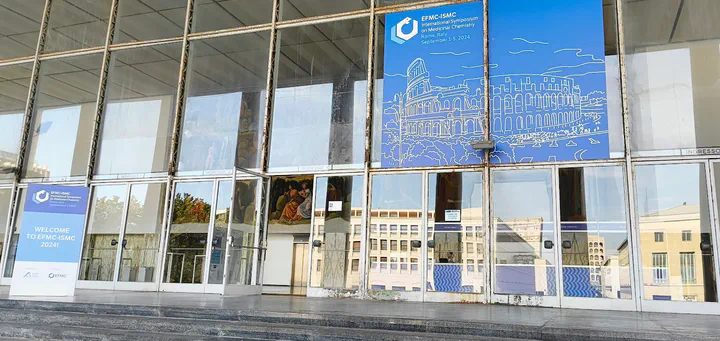Personal Review: International Symposium on Medicinal Chemistry

From September 1st to 5th, the International Symposium on Medicinal Chemistry (ISMC), organized by the European Federation for Medicinal Chemistry (EFMC), took place in Rome. As part of my Post-Doctoral Fellowship, which covers expenses for attending international conferences, I seized the opportunity to present my work on carbocyclic nucleoside analogues through a poster and a flash presentation.
Additionally, I had the chance to attend various talks in the fields of medicinal chemistry, chemical biology, and synthetic chemistry. In the following sections, I would like to share my personal highlights from this symposium.
David MacMillan: Photoredox in Medicinal Chemistry
The presentation by Prof. MacMillan from Princeton University was outstanding. His talk was engaging, precise, and informative. He focused on his recent work in photoredox reactions and their potential applications in medicinal chemistry. In summary, radicals are generated, followed by an SH2 reaction that leads to coupling products. A key aspect of this process is controlling chemoselectivity, as homodimerization can be a significant side reaction. Until now, I had been skeptical about photoredox reactions due to the complexity of the setup, which can make results difficult to replicate. However, this presentation prompted me to rethink my stance, and I am now considering how to explore applications in my own research in the future.
Read more: MacMillan Group at Princeton University https://macmillan.princeton.edu/
Clinical Candidate for the Treatment of Dengue: JNJ-1802
As a researcher focusing on antivirals, I was particularly intrigued by Dr. Tim Jonckers’ presentation from Johnson & Johnson. He discussed the development of a dengue antiviral targeting the viral NS4B protein. It was fascinating to learn about the extensive work involved in optimizing the structure of the drug candidate. In addition to having an active drug, pharmacokinetics and pharmacodynamics are crucial aspects of drug discovery projects. Dr. Jonckers highlighted how subtle structural changes can enhance one parameter while potentially compromising another. Ultimately, in vivo studies demonstrated antiviral activity, with pretreatment before infection yielding the most promising results. I look forward to seeing whether this drug candidate will achieve success in the near future.
Read more: Discovery of JNJ-1802, a First-in-Class Pan-Serotype Dengue Virus NS4B Inhibitor J. Med. Chem. 2024
Session: First Time Disclosures
Attending a conference in the field of Medicinal Chemistry often includes presentations featuring first-time disclosures. During these sessions, research groups from pharmaceutical companies share the structures of their drug candidates along with preclinical and initial clinical results. This year, also an academic research group led by Prof. Stefan Laufer from the University of Tübingen presented their drug candidate HRX-215, an MKK-4 inhibitor. Additionally, Bayer showcased data on their drug candidate BAY2413555, which is being developed for the treatment of chronic heart failure. Other notable disclosures included GSK484, a candidate from GlaxoSmithKline aimed at treating malaria, and NVP-EVS459 from Novartis, which targets cancer therapies.
Read more: First-in-class MKK4 inhibitors enhance liver regeneration and prevent liver failure Cell 2024
Poster Presentation: Carbobicyclic Nuceloside Analogues as Novel Antivirals
In recent years, I have been working on carbobicyclic nucleoside analogues. Despite their bicyclic structure, these compounds have a surprising structural similarity to natural ribose. Since the shape of a molecule is crucial for its biological activity, we were excited to discover antiviral activity against RSV, which we reported last year in Organic Letters.
During my presentation in Rome, I shared further developments in this research. We focused on host interactions and cytotoxicity because many nucleoside analogues can cause side effects, which often leads to the discontinuation of clinical trials. We tested the metabolism and cytotoxicity of our analogues, and I was pleased to discuss the results with many interested professionals.
Read more: Design and Synthesis of Bicyclo[4.3.0]nonene Nucleoside Analogues Org. Lett. 2023
In addition to these presentations, many other talks were held throughout the conference. Notably, sessions on bifunctional protein degraders, molecular glues, and the application of AI in medicinal chemistry get significant interest from the audience. Personally, I found this conference to be a valuable opportunity to connect with the Medicinal Chemistry research community and stay informed about the latest advancements and trends.